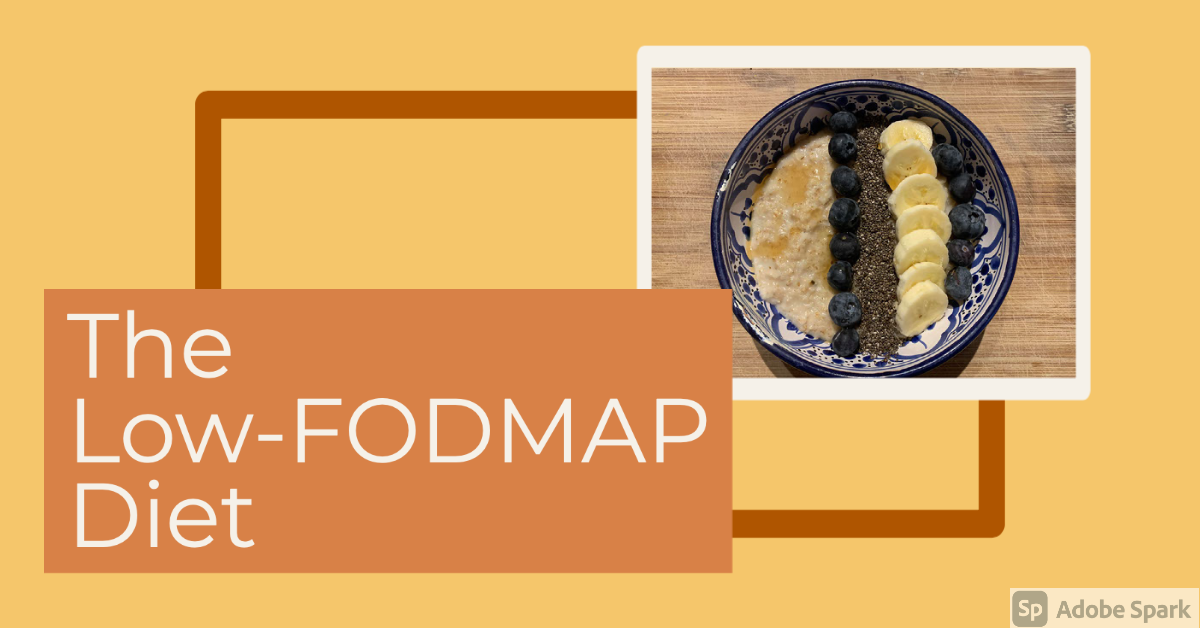By Freya Scott-Turner, The Croft Deputy Editor
The Croft Magazine // Cooking can be challenging at the best of times, not least when you're cursed with a temperamental digestive system. Freya Scott-Turner shares her experience of the low-FODMAP diet, hailed as the potential saviour of IBS-sufferers everywhere.
If Gallup were to conduct a poll of the fastest conversation topics with which to murder the mood, I’m sure IBS - or Irritable Bowel Syndrome - would rank highly. Yet, probably at the detriment of my social life, I’m someone far too willing to chat gut health with anyone at any time. IBS is often erroneously talked of as a condition in its own right when it’s better thought of as a catch-all term for a collection of dysfunctional bowel symptoms (including pain and bloating), and is normally the diagnosis when more specific afflictions have been ruled out.
While it’s definitely not sexy, given that as much as 15% of the population are thought to struggle with IBS, it’s high time we abandoned our societal squeamishness. As my contribution to this struggle, I thought I’d share my experience of the low-FODMAP diet, a programme pioneered by Monash University in Melbourne, which helped me to eradicate my symptoms. FODMAP is the acronymic rendering of ‘Fermentable Oligosaccharides Disaccharides Monosaccharides and Polyols.’ These grisly-looking words denote sugars present in normal, healthy diets that ferment in the large intestine. Whilst most people experience no issues here, this fermentation process can induce pain, bloating and discomfort in IBS sufferers.
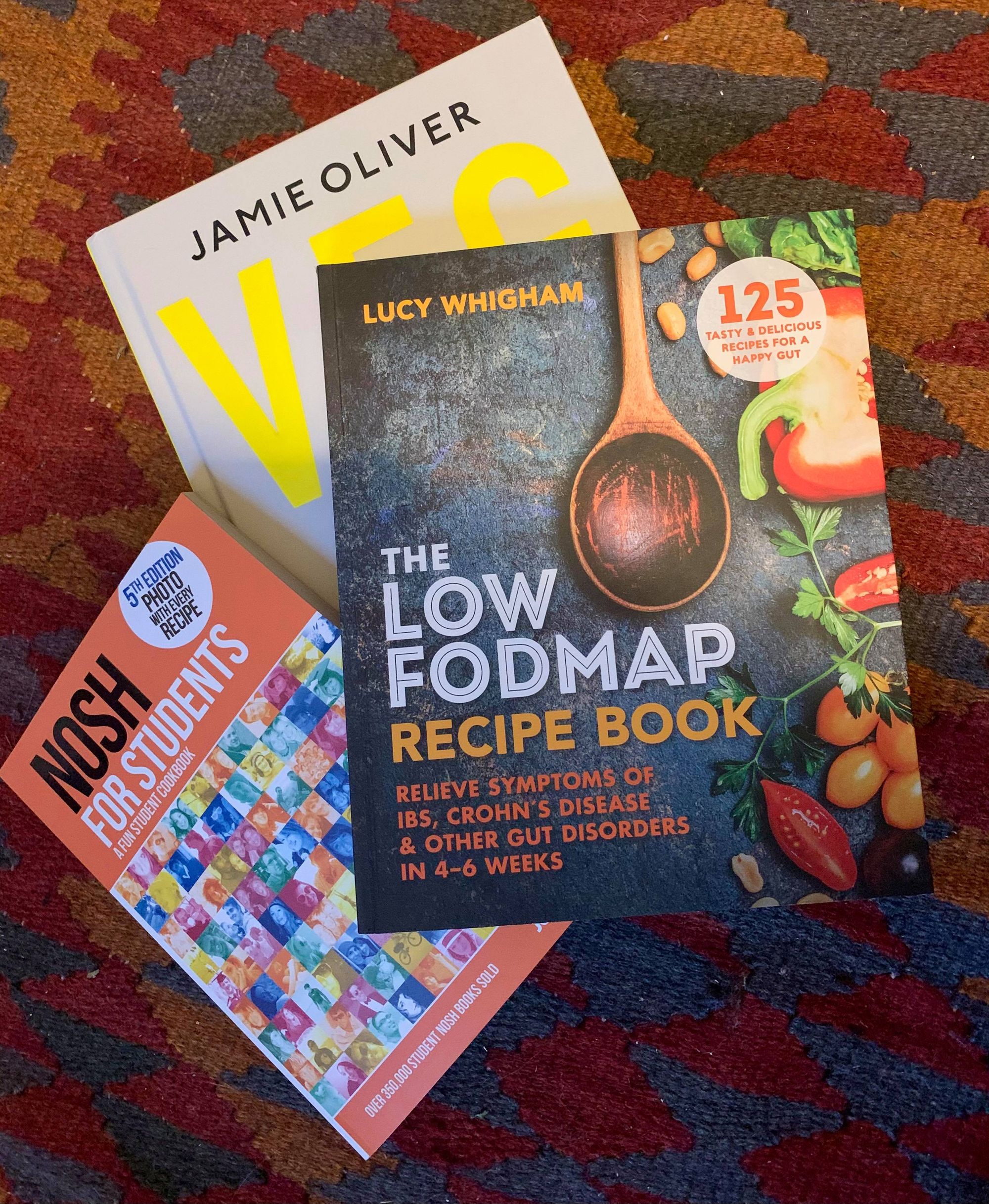
I first came across the low-FODMAP diet after a consultation with a nutritionist. This (quite costly) appointment was somewhat of a last chance saloon in my quest to eradicate my symptoms. At the recommendation of my GP, I had meticulously kept a food diary, systematically eradicating and reintroducing various things from my diet to try and identify the offenders. While this helped, symptoms did not disappear completely and I still lived beholden to my stomach and its unpredictable reactions. As it turned out, for myself and 4 out of 5 people who try the diet, FODMAPs were the common denominator in all my troubles.
My initial reaction to seeing the designated ‘high-FODMAP’ foods that I would have to avoid was complete horror. At first glance the list is fairly exhaustive, and includes wheat, rye, lactose, legumes, lentils, chickpeas and a variety of fruit and vegetables (the full list can be found on the Monash University website.) While the FODMAPs are the general starting point, not everyone reacts badly to every sugar. Working on this regimen with a dietician, you typically cut all the sugars out for a period (in my case ten weeks), before reintroducing them individually to identify those that are particularly problematic for you.
Once starting, it soon became clear that the hardest part about the low-FODMAP diet was just remembering what foods were and weren’t allowed. Despite it’s highly restrictive appearance, with the help of resources like the Monash FODMAP app (which rates foods’ FODMAP content with a traffic light system and offers portion guidelines), I soon became fluent in FODMAP and able to get more creative with my cuisine. Compiled below are a few nuggets of wisdom I’ve gleaned on my low-FODMAP journey.
- Love the leek! Probably the most daunting part of the diet for me was the prospect of cooking without onions and garlic. Yet substituting these for finely diced leeks and garlic-infused oil (a low-FODMAP) was a complete game-changer, making the one-pot university-diet staples like risotto or spaghetti bolognese an option again.
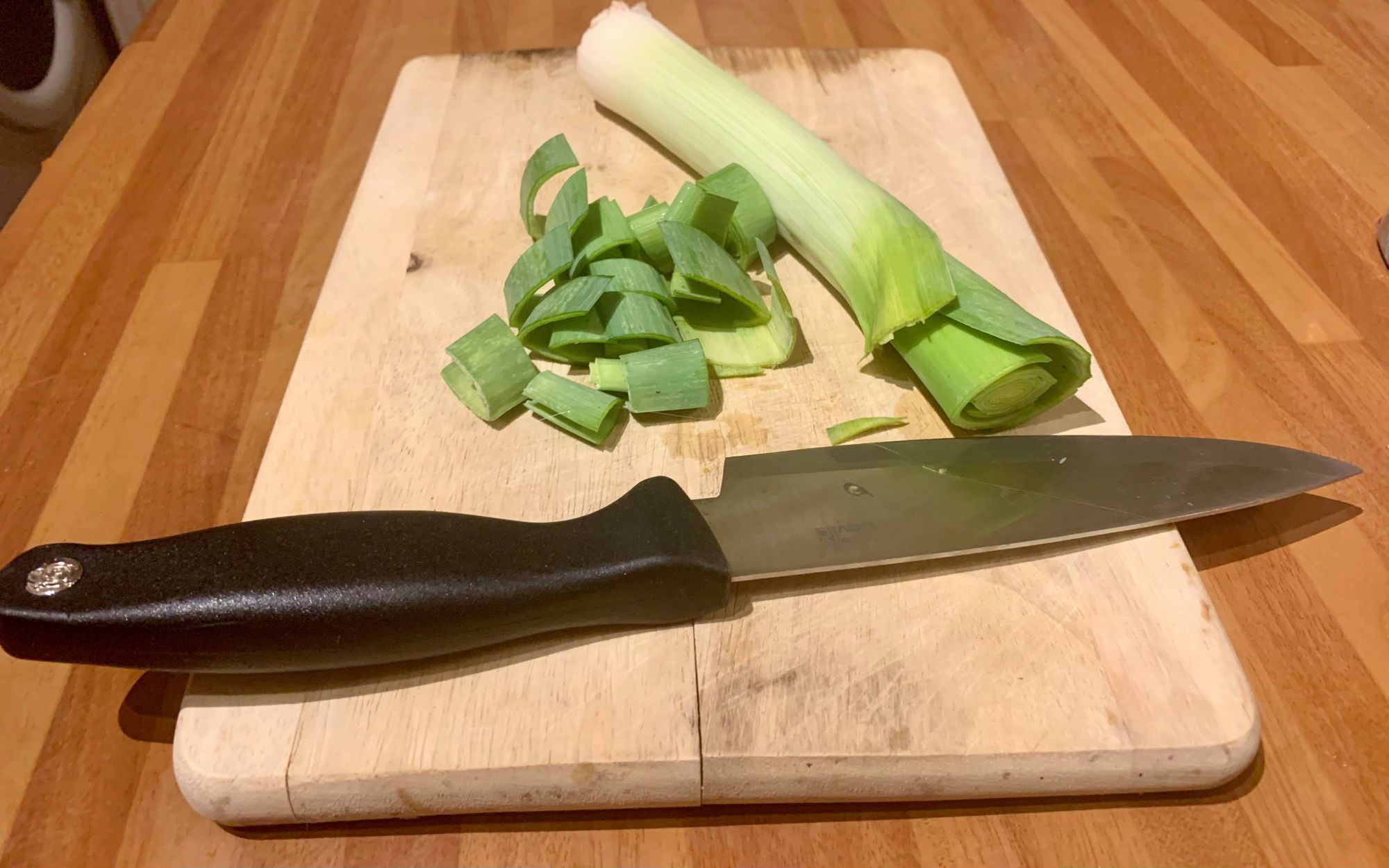
- Have a little of a lot of foods, not a lot of a little (i.e. a selection). Personally, I found my symptoms were often only induced by some foods if I ate them in large quantities. Big, filling salads and stews have consequently become a staple of my diet. Choose meals with a lot of different ingredients included, like salads and stews, rather than huge portions of just one or two ingredients. This way you can pack a lot into each bite without having too much of one thing.
- Low-FODMAP vegetarianism is tough but doable. Since legumes and lentils are now off the table, I had to get creative to keep my meat consumption down. Quorn mince, tofu (firm, not silken) and eggs are your friends here.
Ultimately the scientific jury is still out on whether the low-FODMAP diet can treat the causes of digestive issues, or just eradicate the symptoms. Personally, the difference is such that I’m prepared to make the low-FODMAP diet my new normal. Gone are the days eating plain rice in the run up to any event I might want to wear a crop top to. While I’ll bend the diet if I’m eating out or at a friend’s house, I feel infinitely more equipped to predict what’s going to have me doubled over in pain. Food really is one of life’s great pleasures and, while this diet appears daunting, it is completely possible to follow and remain a bit of a glutton like me.
Example of a low-FODMAP Diet Meal Plan
BREAKFAST
Almond Milk Overnight Oats.
- Top with low-FODMAP fruits (blueberries, raspberries or sliced banana – all available frozen in supermarkets as a budget-conscious option); and sweeten with low-FODMAP sugars (desiccated coconut, peanut butter or maple syrup).
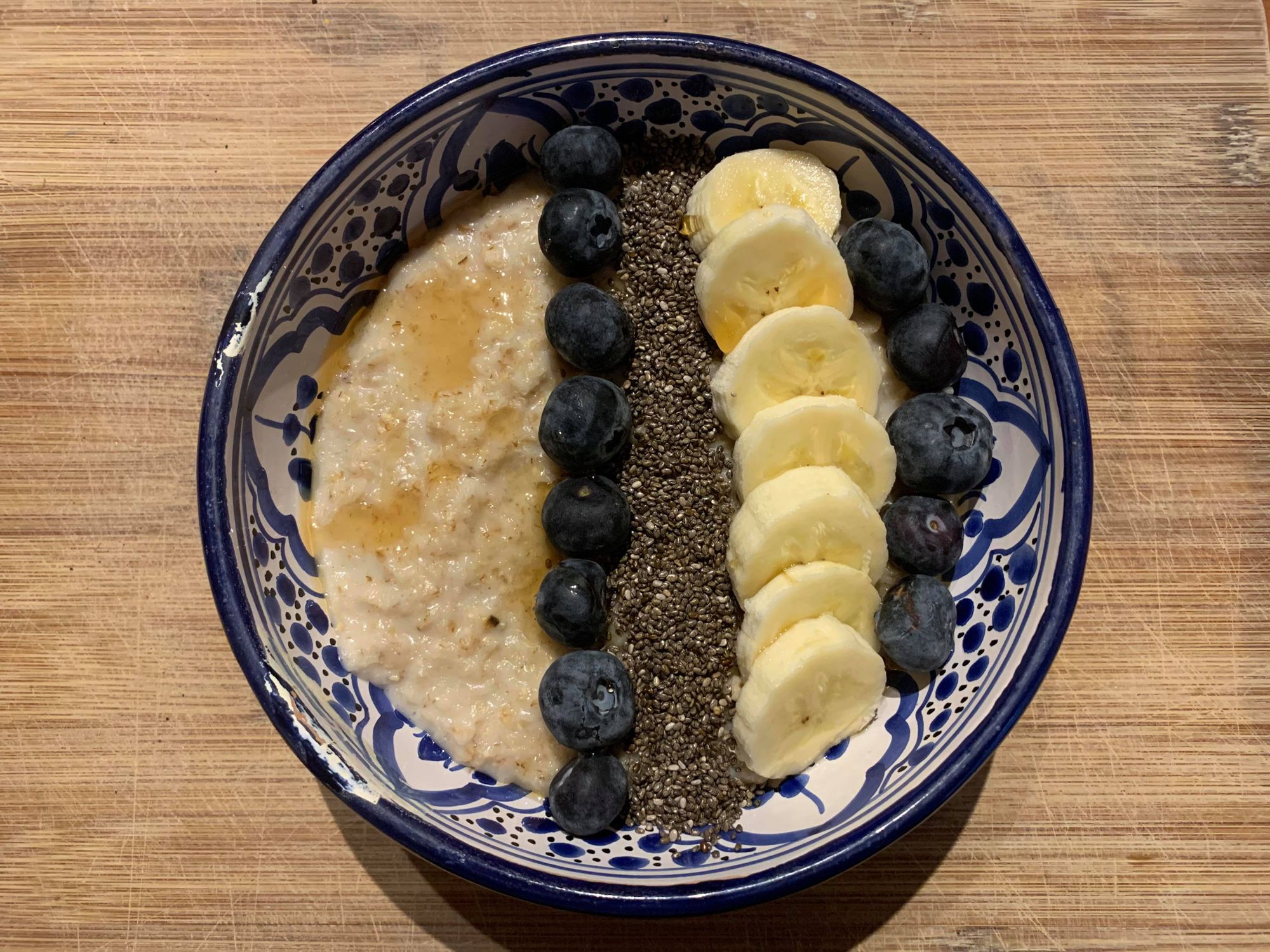
BRUNCH
Potato Rosti with Smoked Salmon, Avocado and Rocket.
- Mix together 500g grated potatoes (peeled), 1 egg and tbsp plain gluten free flour, and some chopped chives, salt and pepper.
- Fry spoons of the mixture in hot oil for about 4 minutes on each side, or until golden. Should make about 6 total.
- Serve with smoked salmon, a couple of slices of avocado (a low-FODMAP portion is roughly 20g), rocket, and lemon juice squeezed on top. Option to add scrambled or poached egg.
LUNCH
Quinoa, Butternut Squash, Kale Cucumber and Goats Cheese Salad.
- Roast small cubes of squash in garlic oil and chilli flakes for 25-35 minutes at 200C.
- Meanwhile, boil quinoa (I prefer the mixed colour) in water with a vegetable stock pot (avoid cubes as these contain onion and garlic – high-FODMAPS).
- Chop cucumber, kale and goats cheese and mix with the finished quinoa and squash. Dress with lemon juice and salt and pepper.
Other Ideas:
- Frittatas (Work well with squash, spinach, leeks, olives, mixed peppers).
- Soups (Can be easily made low-FODMAP by substituting the onions and garlic for leeks and garlic-infused oil). Serve with gluten free rolls or rice cakes.
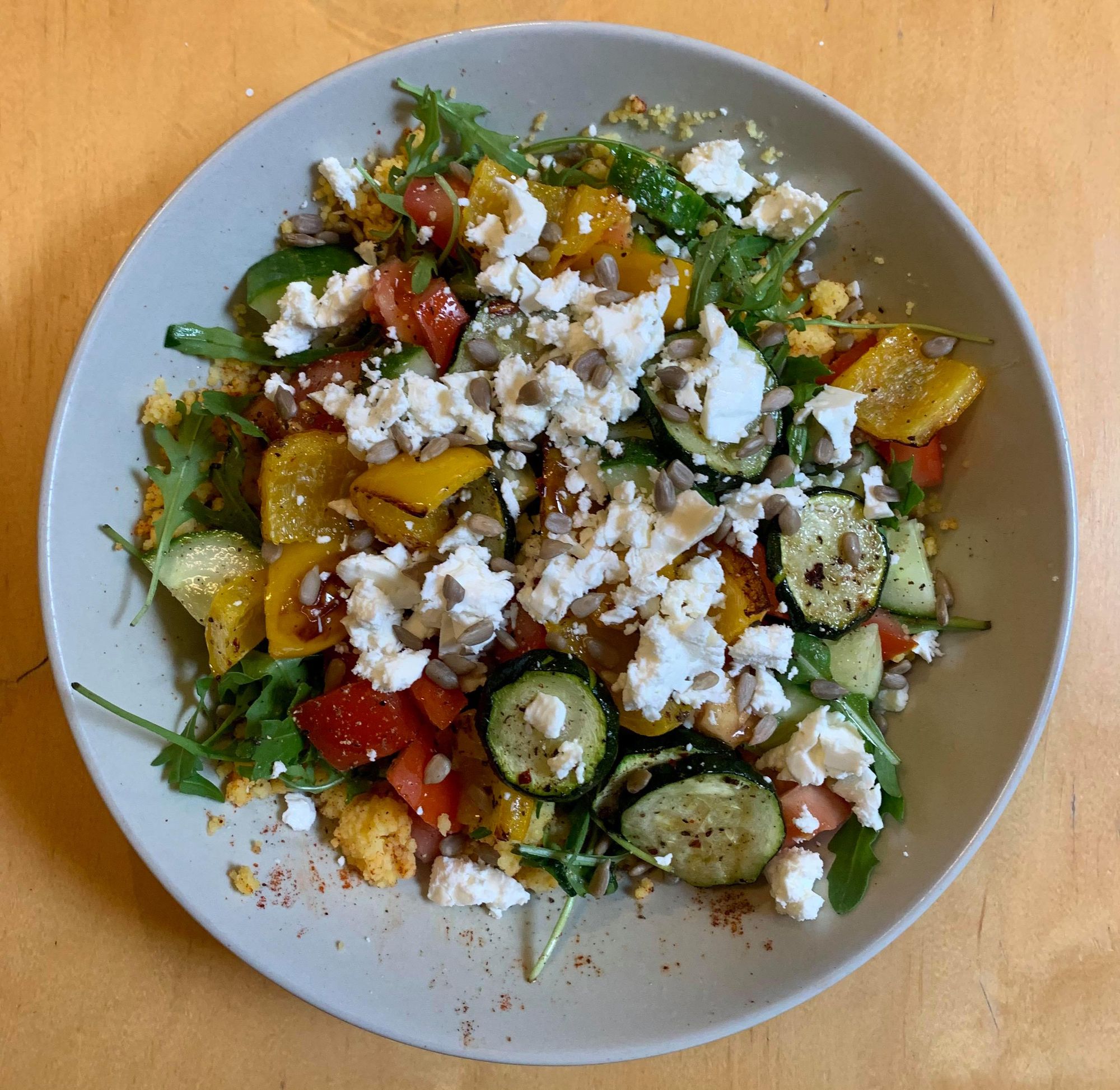
DINNER
Courgetti with Home-Made Pesto.
- Pull all the leaves of a bunch of basil and place in boiling water for 2 minutes, before draining and placing in cold water.
- Toast 50g pine nuts for 5 minutes, then whiz in food processor with the basil and generous amounts of garlic oil, salt and pepper.
- Spiralise a courgette (or finely ribbon with a peeler) and fry for 3 minutes, add the pesto and toss. Serve with grated parmesan.
Other ideas:
- Stir fried low-FODMAP veg (pak choi, carrot and courgette ribbons, peppers, bean sprouts) with rice noodles and gluten free soy sauce. Coat tofu cubes with a gf flour and Chinese five spice mix, and fry in sesame oil. Serve on top.
- Gluten free spaghetti with wok-fried black olives, spiralised courgette, rocket, feta, garlic oil, the juice and zest of half a lemon, chilli flakes and black pepper.
- Heat garlic-infused oil and rosemary roasted aubergine, courgette and pepper with passata and tomato puree and serve on brown rice or gluten free couscous. Serve with feta on top.
Featured Image: Epigram / Freya Scott-Turner
Would you try the low-FODMAP diet?

